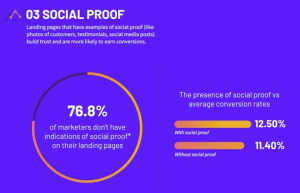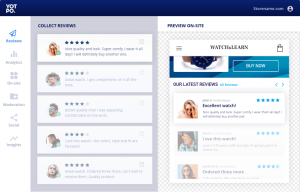One of the biggest challenges website owners experience is a low conversion rate. You run Google Ads, Facebook Ads, SEO campaigns, your website generates all kinds of traffic, but few visitors actually become customers. As a digital marketer, this is a story we hear from prospective customers all the time.
If you’ve done research to address this issue, you may learn that there is a solution to your low conversion rate called Conversion Rate Optimization or CRO. This is a process where you analyze data, run tests, and make improvements based on this data to improve the conversion rate of your website.
A few popular CRO tactics include:
- A/B Testing – Testing variations of the same page or ad to see which elements impact conversion rate.
- Heuristic Analysis – A manual review of the website/landing page for best practices.
- Speed Optimizations – Improving the speed of the website/landing page.
- Best Practices – Ensuring you are following conversion rate best practices with your website.
OK, so you know you need to improve your conversion rate, and you know there are a few tactics you can choose from. But there’s another challenge: proper scientific CRO that is statistically sound is very expensive and time consuming. To hire an agency that specializes in CRO, pricing starts at around $ 5,000/month. This just isn’t feasible for many businesses.
When you want to have an immediate impact without the hefty price tag, look at Heuristic Analysis.
What exactly is Heuristic Analysis?
A heuristic is essential a “rule of thumb” or mental shortcut to quickly generate a conclusion that is likely but not guaranteed to be accurate, without going through the required steps of the scientific method. For example, say you want to know the temperature outside and don’t have a thermometer. Stepping outside and getting goosebumps, you could reasonably conclude that it is cold outside.
Or, say you are asked to guess the number of jelly beans in a jar. You would use heuristic analysis to make a reasonably accurate estimate, because you don’t have the time or opportunity to count each bean. Now say you were told the answer, and asked to count another jar. You would get closer this time – and more accurate with each ensuring experience, the strength of your heuristic analysis improving with time.
We use heuristics all the time in every day life, when perfect solutions may be prohibitive or impossible.
In terms of CRO, heuristic analysis is a manual “walk-through” & evaluation where the outcome is not guaranteed to be optimal (because no scientific testing is completed). Its main advantage is speed. It can be done fairly quickly. And, it is relatively inexpensive.
How to Complete a Heuristic Analysis
First you need to understand that we are using your opinion, which is never perfect, but you can still optimize without data. The more experienced you are, the better you can do at heuristic analysis. However, even if you don’t have experience, using a structured approach to find areas for improvement is better than just using an opinion, especially a biased opinion (and all opinions are biased!).
So instead of modifying landing pages based on the CEO’s preferences or the web designer’s favourite colour, you are using specific questions to increase the conversion-friendliness of the page.
Another important consideration here is that what you find during the heuristic analysis is still an opinion. In a perfect world, you will test this opinion to confirm it is correct. You really should validate your hypothesis with a test to validate your changes.
Now to the actual heuristic analysis. You choose a page that you want to improve and you assess it based on four criteria. Some heuristic analysis models use relevancy as a fifth criteria, but because you will likely drive traffic from multiple sources (channels, ads, etc.) I’m leaving out relevance as a criteria.
This approach is loosely based on the heuristic analysis approach used by CXL. If you want to go deeper into CRO, I highly recommend their blog.
The Heuristic Analysis Questions
- Increase Clarity: Is the headline/content on this page crystal clear? Can we simplify it or make it clearer?
- Increase Value/Motivation: Are we communicating value? What can we do to increase user motivation to take the desired action? This can be done with an offer, value points, or adding value (what the customer gets) in the headline.
- Reduce Friction: Imagine you are the customer, what on this page is making you uncertain or doubtful? Is the process of completing the desired action difficult? Can we simplify it?
- Reduce Distraction: Is there anything on the page that is unnecessary? Anything preventing the user from taking action?
Heuristic Analysis Best Practices
There are a few best practices to consider when you are completing your heuristic analysis:
- Don’t be Random – Don’t jot down random thoughts or opinions. You should follow the process as outlined above and comment why you are making specific recommendations.
- Get a Second Opinion – Ask someone else on your team to go through the same process. Compare and discuss your results as no matter what individual preferences, biases, and opinions will come into play in your findings.
- Validate – In a perfect world, the heuristic analysis is used to find areas to test scientifically, so when possible test your findings with A/B testing.
Once you have completed your heuristic analysis, you can list out all of your findings (optimizations) and start updating your landing page.
Digital & Social Articles on Business 2 Community
(29)






